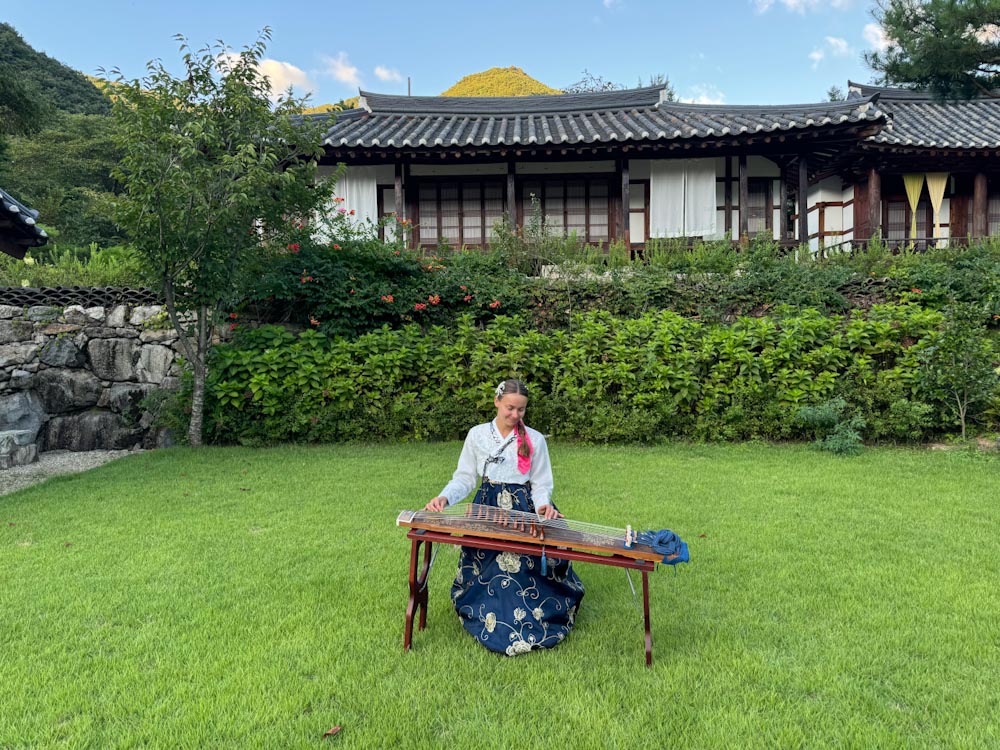When you picture South Korea, you’re probably thinking of Seoul’s towering skyscrapers, chic cafes, and sleek beauty salons. But what if you’re craving a more traditional experience? As a traveler, I love mixing the well-known with the hidden gems, and that’s exactly what led me to Jeonju—a historic city from the Joseon Dynasty—on a two-day tour.
☺️ Thanks to Korea Travel Easy for an unforgettable tour!
The name of the tour is “Hidden Gems of Korean Gen-Z Premium Hanok Stay in Soyang Gotaek with K pop and K drama Filming Locations (Jeonju Wanju 2D1N)”
Содержание
Discovering Bibimbap in Jeonju
After a three-hour journey, I was more than ready to dive into Jeonju’s culinary scene. First stop: a local favorite restaurant.
Jeonju is celebrated as the birthplace of bibimbap, and Gogung is known for serving one of the best. Bibimbap, which means “mixed rice,” brings together rice, chili paste, and a colorful variety of vegetables and meats, all with regional twists.
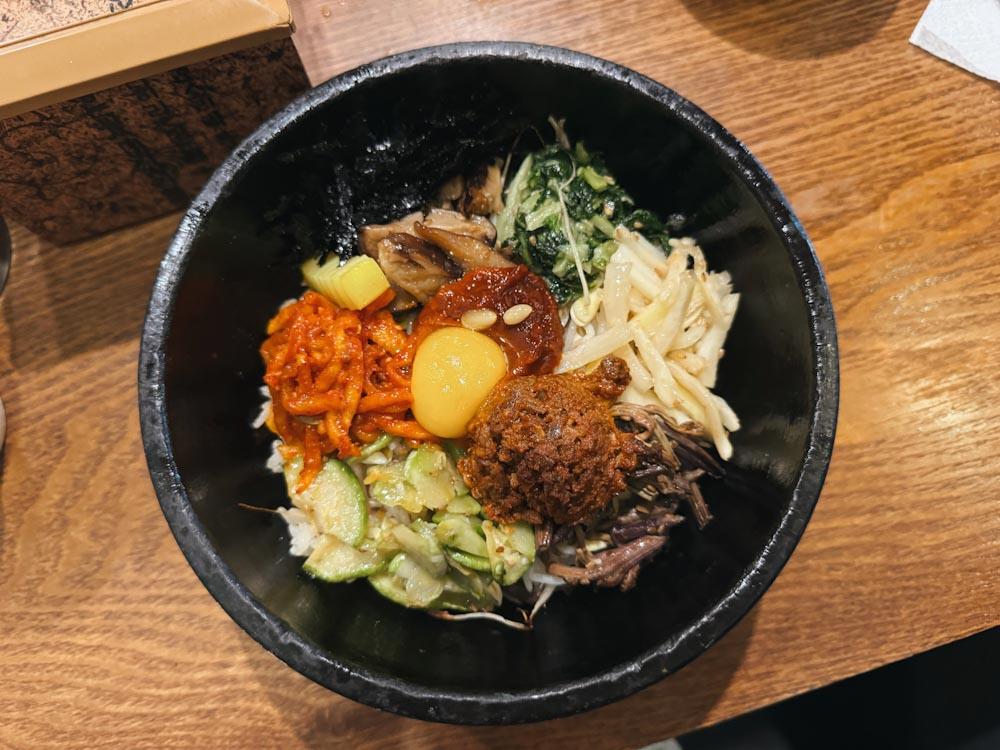
In Asian culture, even the way a dish looks can carry meaning. Bibimbap strikes a balance of five flavors—salty, sweet, spicy, sour, and bitter—and its vibrant colors represent the five elements: fire, wood, earth, metal, and water.
Jeonju’s version comes with options like raw meat or served in a sizzling hot stone bowl—dolsot bibimbap. I went for the latter. The hot stone crisps the rice at the bottom, giving it that perfect golden crunch so beloved in Korean cuisine. The raw egg cracked on top cooks as you mix it in, while sesame seeds and shiitake mushrooms add layers of flavor. A cool bean sprout soup came on the side, perfect for calming down the heat from the spicy kimchi.
Dressing Up in a Traditional Hanbok
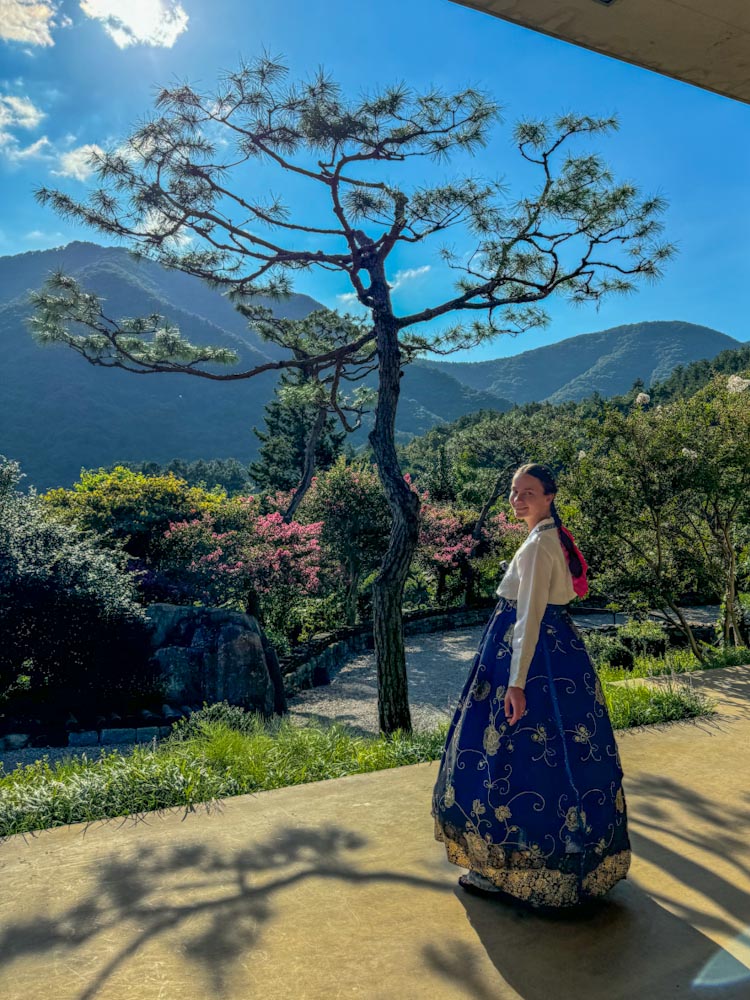

After lunch, we headed to a rental shop to try on traditional Korean hanbok, the iconic clothing style worn since the 14th century. For women, it’s a long, flowing skirt paired with a fitted top, while men wear trousers, a long robe, and a tall hat. While white was the most common color, hanboks for special occasions were sewn in vibrant hues.
With a few expert movements, the attendant slipped a bell-shaped petticoat on me, wrapped the hanbok around, and styled my hair into a sleek braid. In no time, I felt like a princess from a historical drama.
Dressed in our beautiful hanboks, we wandered through the streets of Jeonju. Most of the tourists here also rent hanboks, so it felt like we’d been transported back in time.
Learning to Play the Gayageum
The gayageum is a traditional Korean instrument with 12 strings that dates back to the 6th century. Played by plucking the strings, it produces deep, resonant tones.
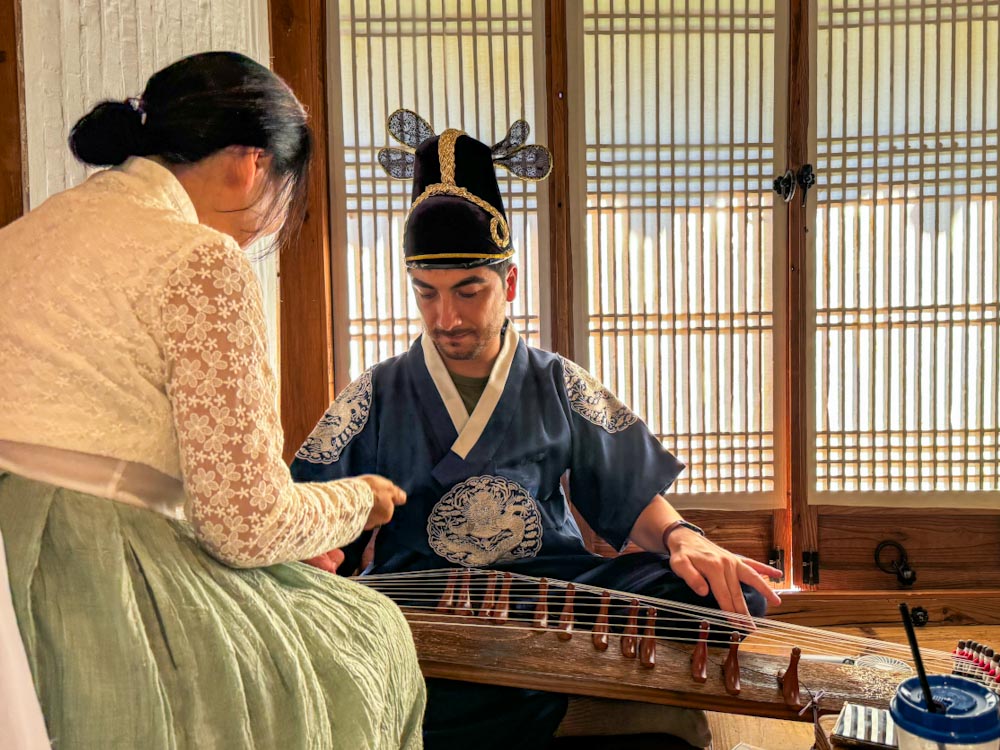
👉For a modern twist, check out Luna Lee’s YouTube channel, where she performs classic rock songs on the gayageum—it’s mesmerizing!
Our tour included a 1.5-hour lesson on how to play this ancient instrument. We learned about its history, listened to a few pieces, and then tried our hand at playing. Now, I’m not musically gifted, so I didn’t exactly master the gayageum, but I love trying new things—even when I’m not sure I’ll succeed. It’s these experiences that stick with you, more than just the sightseeing.
As a bonus, we were even asked to sing in Korean! 😅 Not just any song, but “Arirang,” a folk tune recognized by UNESCO.
Often called Korea’s unofficial anthem, “Arirang” features a refrain—“Arirang, Arirang, Arariyo”—and two simple lines that change depending on the region. There are about 3,600 variations of “Arirang,” with lyrics that reflect themes like love, war, or separation with the beloved ones.
The Traditional Hanok Hotel Soyang Gotaek
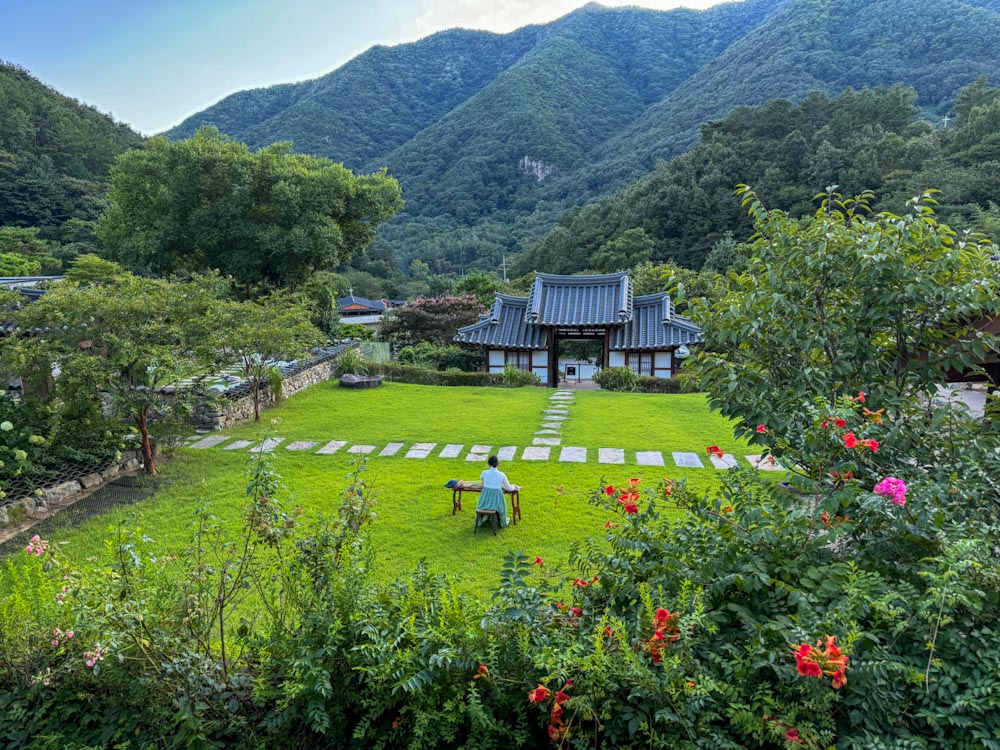
The highlight of our trip was staying at a traditional Korean hanok house. There are plenty of hanoks in Korea, but «Soyang Gotaek» stands out.
First of all, it’s tucked away in the mountains, it feels like a village from the Joseon Dynasty. The property boasts a library, a peaceful café with stunning views, and even a lake. The blend of modern design with ancient architecture creates a breathtaking aesthetic.
Interestingly, you won’t find this hanok on Trip.com, Booking, or any major platforms. It’s positioned as a boutique hotel and can only be booked directly or through a tour.
Staying in a hanok offers a one-of-a-kind experience. Koreans traditionally sleep on the floor, using thin mattresses, flat pillows, and light sheets. They say it’s great for your health, and I found it surprisingly cozy. But if that’s not your style, the hotel also offers rooms with beds.
The floor in a hanok is heated by a traditional system called “ondol,” where smoke from the kitchen flows through channels under the floor, exiting through a chimney. In summer, the raised structure allows air to circulate underneath, keeping things cool. Modern hanoks have adapted with electric heating and air conditioning.
In the evening, we were treated to a special dinner made from ingredients grown in the hanok’s garden, with sauces crafted on-site.
A Morning Surprise
The next morning brought an unexpected treat.
Breakfast was also traditional—simple but full of character. It’s the kind of meal Korean grandparents still enjoy, though younger generations have mostly switched to eggs and coffee. We were served boiled rice that was slightly scorched, floating in water, accompanied by an array of side dishes, many of which packed a spicy punch. Dessert? Dried fruits and a small cup of iced coffee.
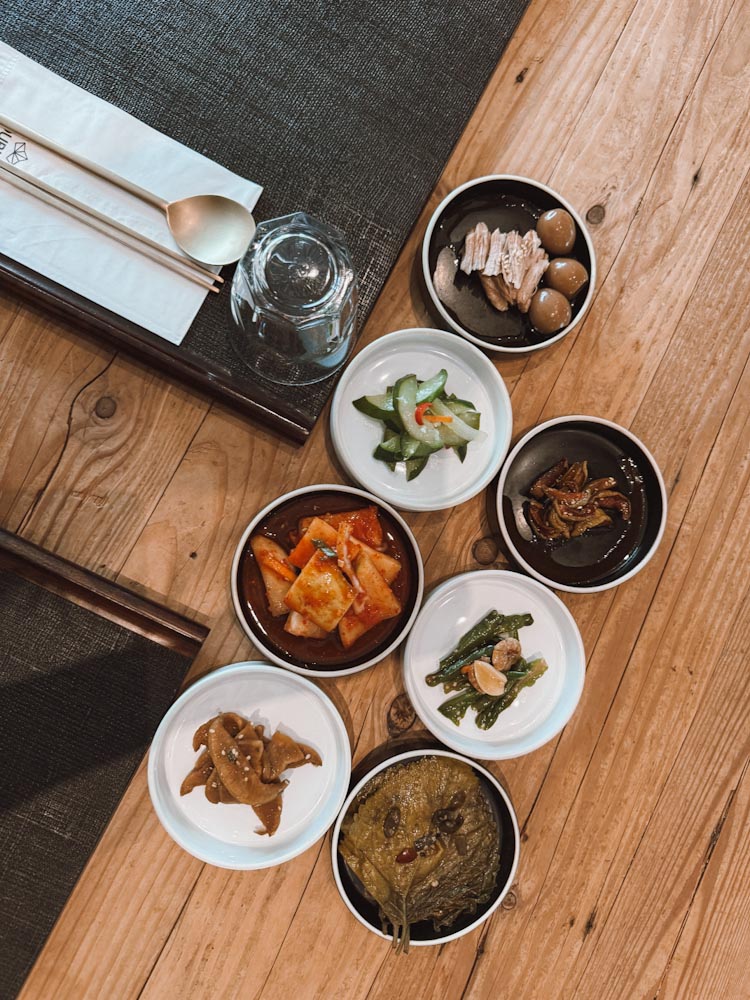
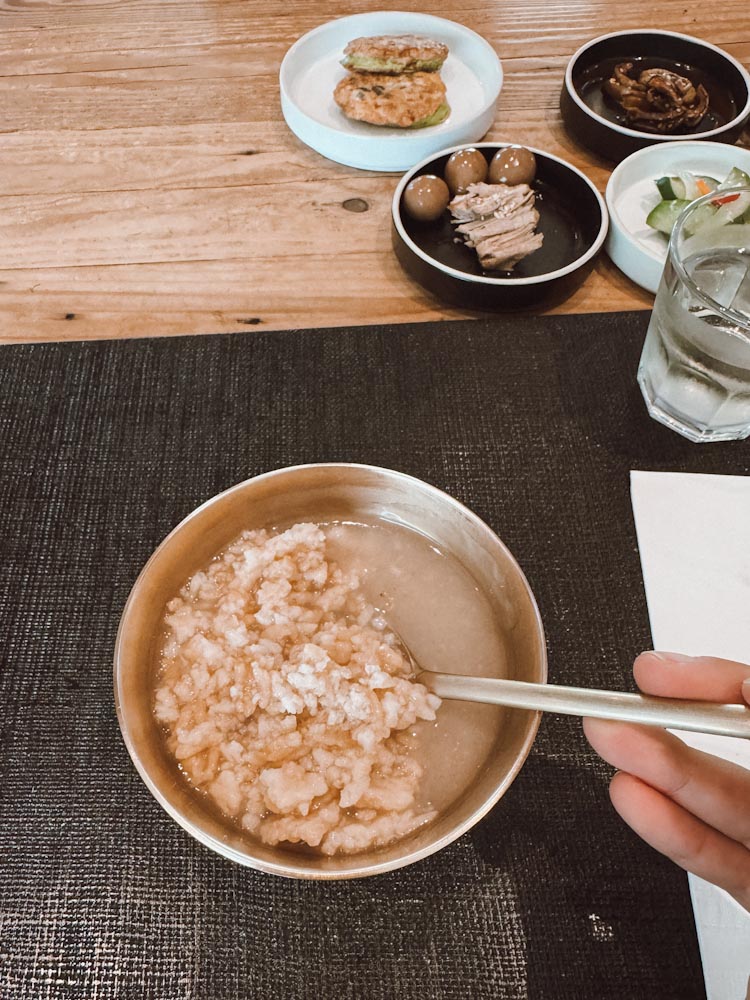
I love sampling local cuisine—it’s not always my favorite, but it makes me feel more connected to the place I’m visiting. Surprisingly, for many Koreans, this burnt rice porridge is considered a nostalgic and comforting dessert.
The view from the window made the experience even more special. It reminded me how important it is to start the day slowly, without rushing out the door with a cup of Starbucks in hand. Instead, take a moment to savor the scenery and let the calmness of the mountains set the tone for the day ahead.
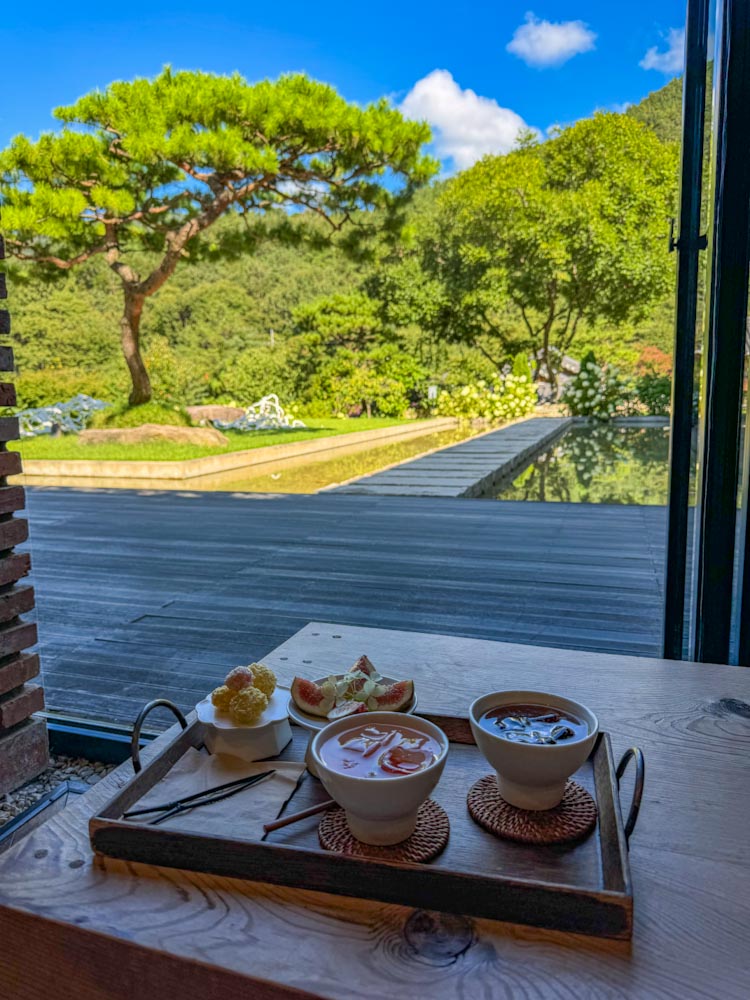
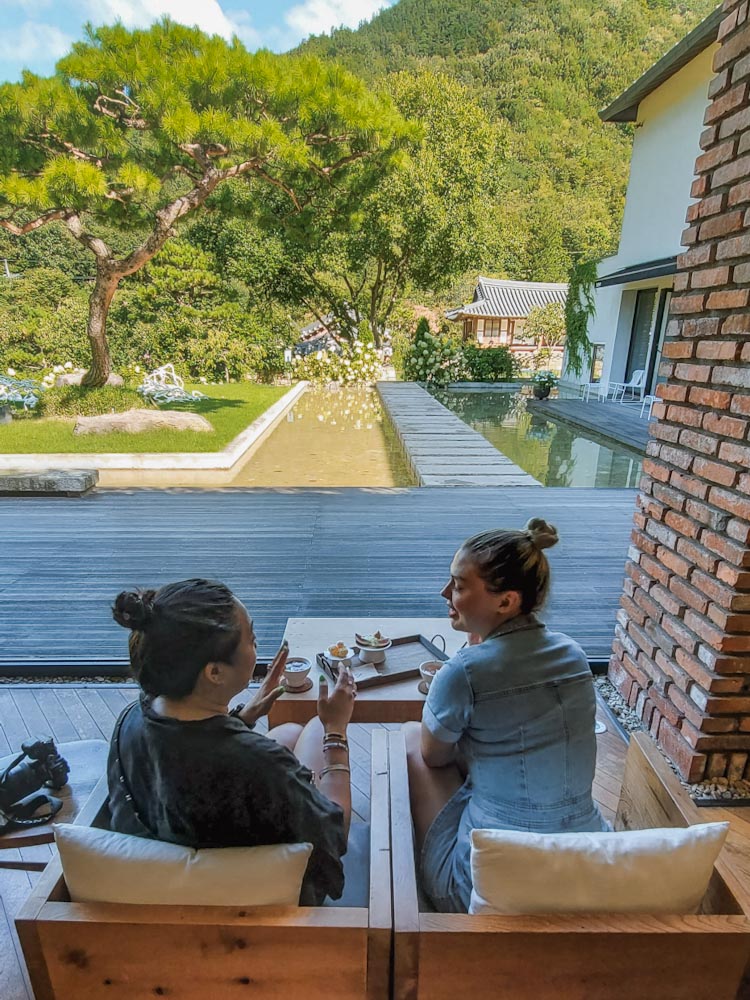
Jeonju Hanok Village: An Open-Air Museum
Jeonju is renowned for its historic village, where over 800 traditional houses from the Joseon Dynasty have been preserved. The village was built in the 1910s, and in recent years, the government has heavily invested in turning it into a thriving tourist destination.
Jeonju is the birthplace of King Taejo, also known as Yi Seong-gye, the founder of the Joseon Dynasty, which ruled Korea for 500 years as the country’s last monarchy. A portrait of king is housed in Gyeonggijeon Hall within the village, drawing thousands of visitors every day.
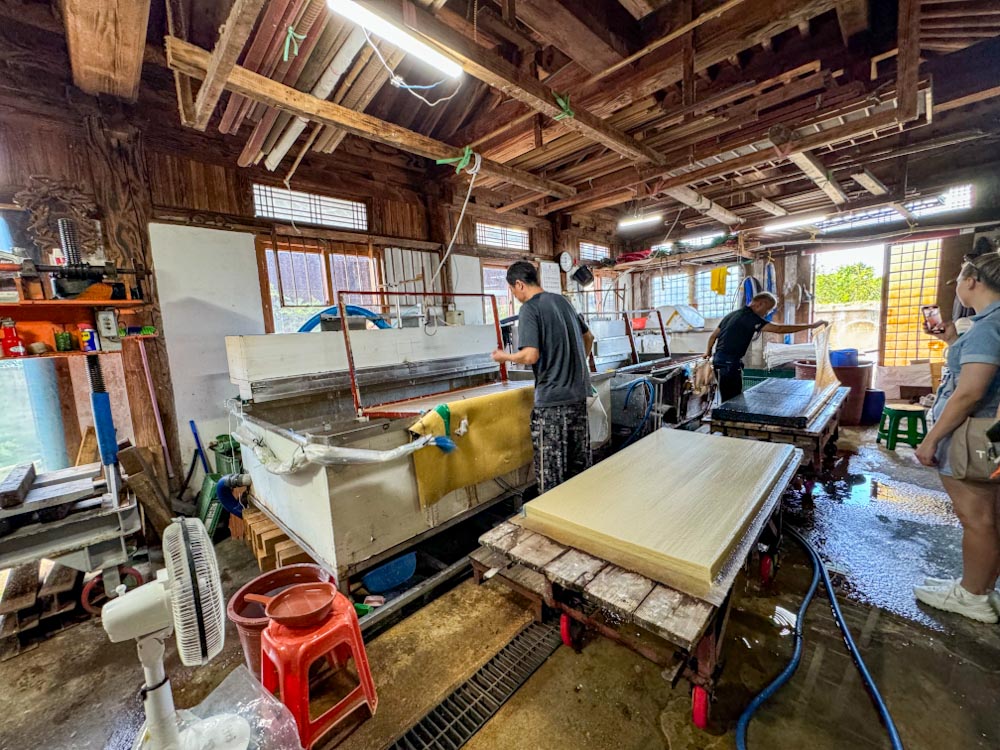
The village itself is a charming, compact area, beautifully designed in a traditional style. Several small museums operate within hanok houses, and most of them are free to enter. I visited the museums of fans, rice wine, and Korean paper—my favorite was the paper museum. Unlike the more touristy spots, people here were hard at work and paid little attention to visitors.
Korean paper, known as hanji, is famously durable, able to last for over a thousand years! Interestingly, 80% of hanji production is exported to Japan, with the rest sold within Korea.
A Public Resting Place
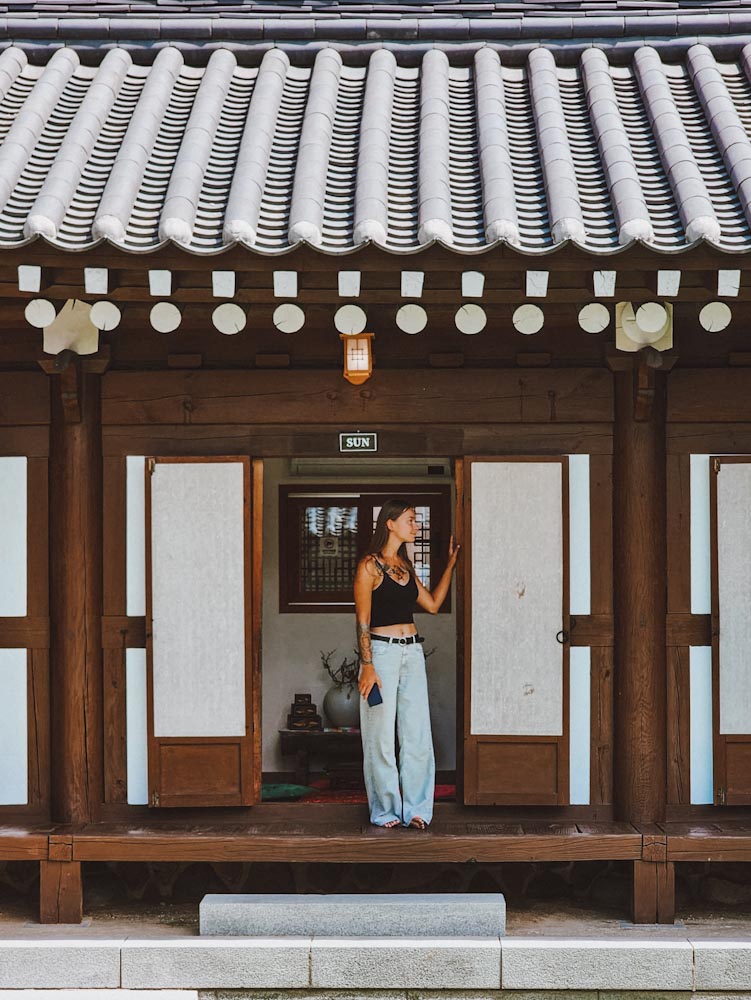
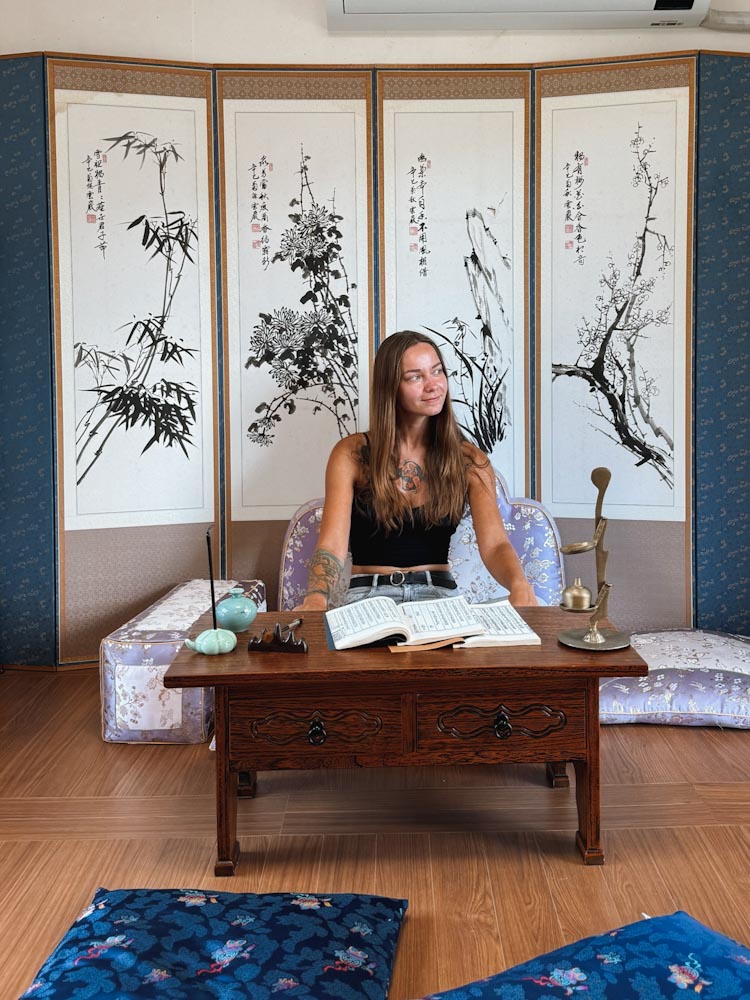
Our tour wrapped up at a cozy building where we could relax on cushions in private rooms. Koreans take rest seriously, and you’ll find plenty of public spaces dedicated to relaxation—libraries, cultural centers, and even park benches. Some saunas (jjimjilbangs) even let you sleep there overnight!
The Royal Cuisine Restaurant
The highlight of day two was lunch at Goong, a restaurant specializing in royal court cuisine from the Joseon Dynasty! Just 30 minutes from Jeonju, the restaurant is led by Chef Yoo In-ja, who trained under Hwang Hye-seong, a master of Joseon court cooking.


This type of banquet, called hanjeongsik, was once served monthly to the royals. Each of the eight provinces would send their best produce to the palace, where it was crafted into dishes for the king.
The meals were served on brass utensils, and the dishes varied depending on the season and the chef’s imagination, all while adhering to the philosophy of Eumyang Ohaeng. This concept emphasizes harmony between the five tastes (grilled, steamed, boiled, fried, or salted) and the five colors (red, blue, green, white, and yellow).
In the Footsteps of BTS
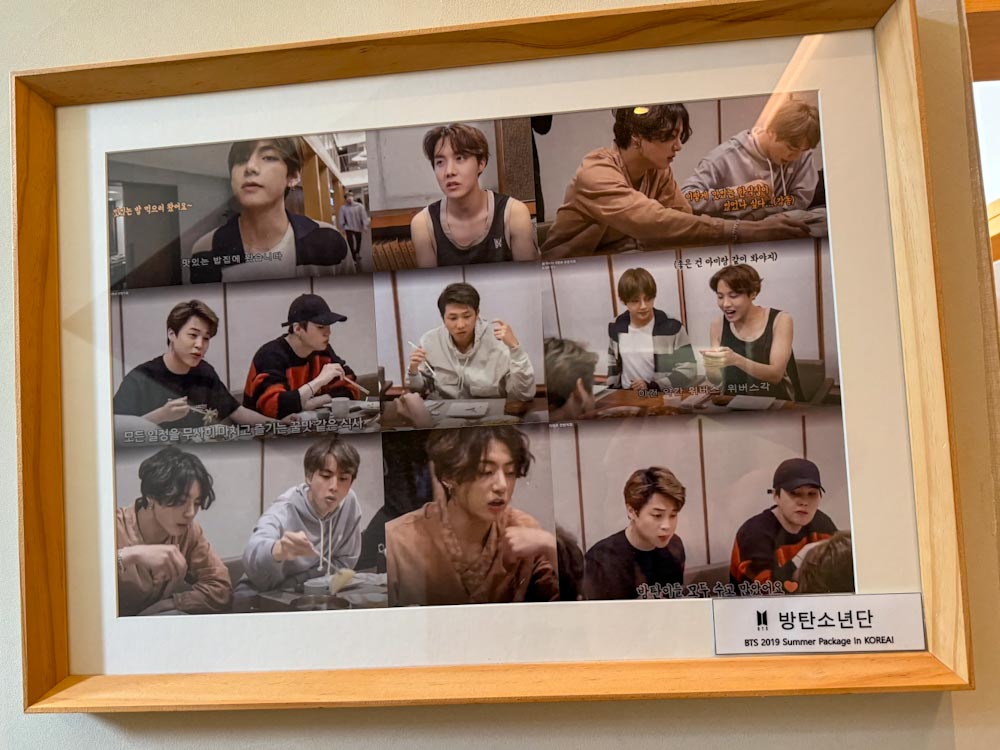
One of the major themes of my tour was tracing the footsteps of BTS, the globally popular Korean band. For instance, they held a photo shoot and stayed for five days at the Awon Old Hanok Museum, had lunch at Goong, and filmed an episode of their reality show “Run BTS!” in the historic village of Jeonju.
Tours following popular TV shows or bands are a big trend in Korea.
While I’m not a BTS fan, it didn’t affect my enjoyment of the trip. Most of the places we visited were BTS-related, but they were just as fascinating for their cultural and historical value.
